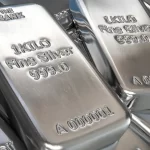
In the world of investment, the choice between Commodity Exchange-Traded Funds (ETFs) and physical commodities presents investors with distinct advantages and challenges. Each avenue offers unique opportunities for portfolio diversification and exposure to commodity markets. In this article, we delve into the pros and cons of both options, shedding light on key considerations for investors seeking to navigate these markets effectively.
Understanding Commodity ETFs
Commodity ETFs provide investors with access to a wide array of commodities, ranging from precious metals like gold and silver to agricultural products like corn and wheat. These investment vehicles operate similarly to traditional ETFs, trading on stock exchanges and tracking the performance of underlying commodity indexes or futures contracts.
Advantages of Commodity ETFs
One of the primary advantages of Commodity ETFs is their accessibility for retail investors. Unlike traditional commodity trading, which often requires significant capital and expertise, ETFs enable individuals to invest in commodity markets with relative ease. Moreover, Commodity ETFs offer diversification benefits, allowing investors to spread their risk across multiple commodities within a single investment vehicle.
Liquidity and ease of trading are additional advantages of Commodity ETFs. Unlike physical commodities, which may require specialised storage facilities and logistical arrangements, ETFs can be bought and sold on stock exchanges during regular trading hours. This liquidity enhances investors’ ability to enter and exit positions efficiently, without incurring significant transaction costs.
Disadvantages of Commodity ETFs
Despite their advantages, Commodity ETFs have certain drawbacks that investors should consider. One notable concern is the potential for tracking error, wherein the performance of the ETF deviates from that of the underlying commodity index or futures contracts. Tracking errors can result from factors such as management fees, trading costs, and imperfect replication of the underlying assets.
Expense ratios represent another downside of Commodity ETFs. While these fees are typically lower than those associated with actively managed mutual funds, they can still erode investors’ returns over time. Moreover, Commodity ETFs are subject to market dependencies, meaning their performance is influenced by broader economic factors, commodity price movements, and geopolitical events.
Exploring Physical Commodities
Physical commodities encompass tangible assets such as gold, silver, crude oil, and agricultural products. Unlike Commodity ETFs, which represent ownership interests in underlying commodities, physical commodities involve direct ownership of the underlying assets themselves.
Advantages of Physical Commodities
One of the primary advantages of physical commodities is their status as tangible assets. Unlike financial instruments, which derive their value from contractual obligations, physical commodities have intrinsic value that is independent of market sentiment or economic conditions. This inherent value can serve as a hedge against inflation and currency depreciation, making physical commodities attractive to investors seeking to preserve wealth over the long term.
Another advantage of physical commodities is the potential for physical delivery. Unlike Commodity ETFs, which settle in cash, physical commodities can be physically delivered to investors upon expiration of futures contracts. This feature provides investors with greater flexibility and control over their investment holdings, allowing them to utilise commodities for industrial purposes or store them as a store of value.
Disadvantages of Physical Commodities
Despite their advantages, physical commodities present certain challenges for investors. One notable concern is the cost associated with storage and transportation. Unlike Commodity ETFs, which are held in electronic form, physical commodities require storage facilities and logistical arrangements, which can incur additional expenses and logistical complexities.
Moreover, physical commodities lack the diversification benefits of Commodity ETFs. Investing directly in physical commodities exposes investors to idiosyncratic risks associated with specific commodities, such as supply disruptions, geopolitical tensions, and adverse weather conditions. This lack of diversification can increase investors’ exposure to volatility and amplify the impact of adverse market events.
Performance Comparison and Risk Factors
When comparing the performance of Commodity ETFs and physical commodities, investors should consider factors such as historical returns, risk profiles, and liquidity. While Commodity ETFs offer exposure to a diversified basket of commodities, physical commodities provide direct ownership of tangible assets with intrinsic value.
However, both options entail certain risks that investors should be aware of. Commodity ETFs are subject to market risk, counterparty risk, and regulatory risk, while physical commodities are susceptible to price volatility, geopolitical risks, and weather-related factors. Understanding these risks is crucial for investors seeking to navigate commodity markets effectively and mitigate potential losses.
Considerations for Investors
In choosing between Commodity ETFs and physical commodities, investors should carefully assess their investment goals, risk tolerance, and time horizon. While Commodity ETFs offer convenience and diversification, physical commodities provide tangible assets with intrinsic value and potential for physical delivery. By considering these factors, investors can make informed decisions that align with their financial objectives and risk preferences.
Conclusion
In conclusion, the choice between Commodity ETFs and physical commodities depends on investors’ individual circumstances and preferences. Both options offer unique advantages and challenges, and understanding the pros and cons of each is essential for navigating commodity markets effectively. By weighing the factors discussed in this article and conducting thorough research, investors can make informed decisions that support their long-term financial goals and objectives. For more information on Commodity ETFs and other investment opportunities, consider exploring offerings from Saxo Capital Markets.








